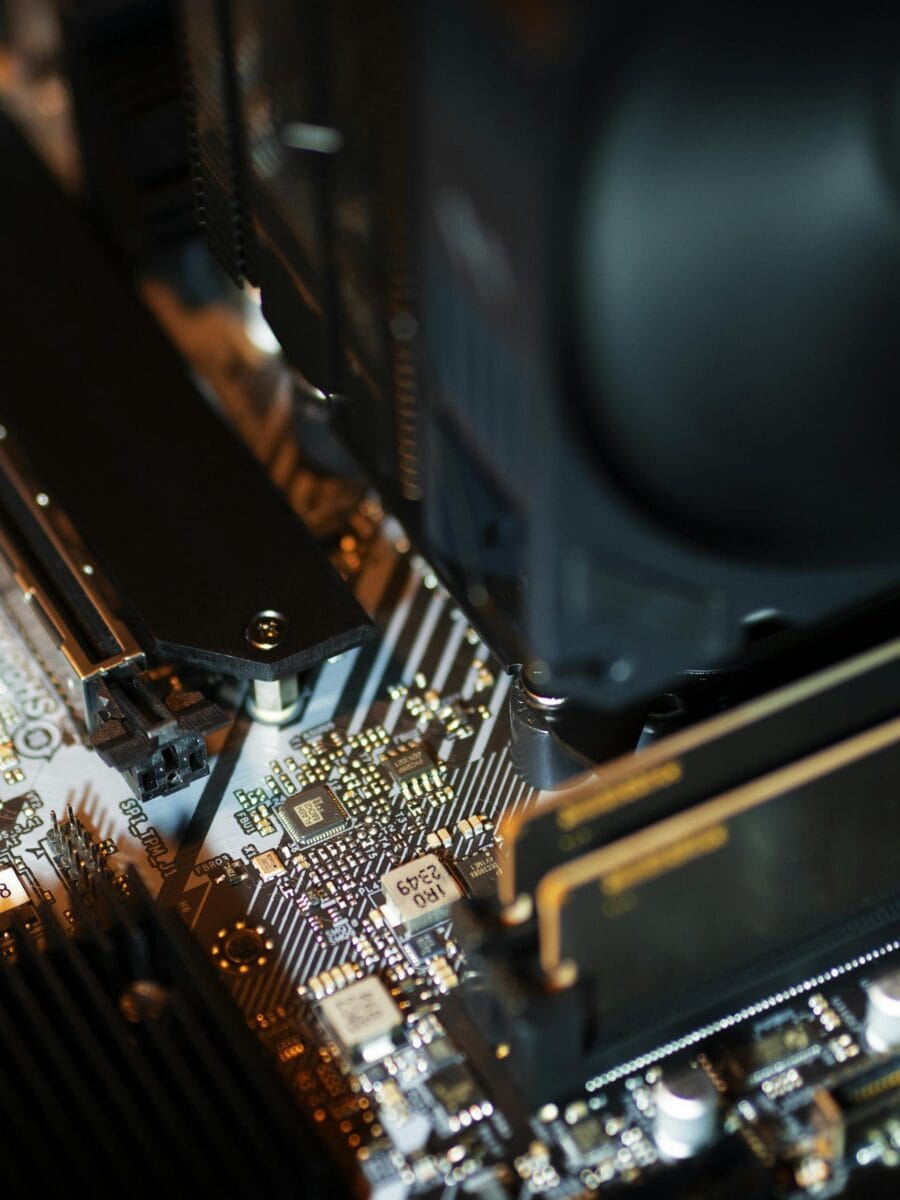The electronics industry is the bedrock of modern innovation, powering everything from consumer gadgets to critical aerospace systems. Behind every groundbreaking device is a complex and highly sophisticated process known as electronics manufacturing. This field is currently undergoing a profound transformation, driven by advancements in automation, data analytics, and global supply chain dynamics. As original equipment manufacturers (OEMs) face increasing pressure to innovate faster and more efficiently, they are turning to specialized partners for support.
Advanced Electronic Manufacturing Services (EMS) have emerged as the cornerstone of this new era. These expert providers offer a comprehensive suite of services that go far beyond simple assembly, enabling companies to scale production, optimize costs, and accelerate their time to market. This article explores the evolving landscape of electronics manufacturing, delves into the critical role of EMS providers, and examines the trends shaping the future of the industry. From the rise of smart factories in the USA to the integration of AI and robotics, we will cover the key elements transforming how electronic products are made.
Electronics manufacturing is the comprehensive process of designing, producing, testing, and distributing electronic components and assembled products. It encompasses a wide range of activities, from the fabrication of individual components like semiconductors and resistors to the assembly of complex printed circuit boards (PCBs) and the final integration of these systems into finished goods. This intricate process is the engine that drives the global technology sector.
The journey of an electronic product involves several key stages:
This multifaceted discipline requires immense expertise in engineering, logistics, and quality control. As products become smaller, more powerful, and more complex, the demands on electronics manufacturing continue to grow, making specialized services more valuable than ever.
Electronic Manufacturing Services (EMS) have evolved significantly from their origins as simple contract assembly shops. Initially, these companies focused primarily on providing labor for PCB assembly. However, as the electronics industry globalized and OEMs began to focus more on their core competencies—research, development, and marketing—the role of their manufacturing partners expanded.
The modern EMS provider is a strategic partner, offering end-to-end solutions that cover the entire product lifecycle. This evolution was driven by several factors:
Today, leading EMS companies offer a broad spectrum of services, including design collaboration, supply chain management, advanced assembly, testing, and even aftermarket services like repair and logistics. This integrated approach allows an original equipment manufacturer to bring products to market faster and more efficiently.
The demand for a skilled electronic products manufacturer has never been higher. This surge is fueled by the relentless pace of technological advancement and the proliferation of electronics into nearly every aspect of modern life. From smart home devices and electric vehicles to medical equipment and industrial sensors, the need for sophisticated electronic components and systems is exploding.
Several key trends are contributing to the high demand for electronics manufacturing expertise:
Because of this demand, OEMs are increasingly outsourcing production to a specialized electronic products manufacturer that possesses the necessary technology, expertise, and scale. This allows OEMs to focus their resources on innovation and brand building, knowing that the manufacturing process is in capable hands.
For years, much of the world’s electronics manufacturing was concentrated in Asia. However, a significant shift is underway, with a growing emphasis on reshoring and nearshoring production. As a result, the market for Electronic Manufacturing Services USA is experiencing a renaissance. This trend is driven by a desire to build more resilient and responsive supply chains.
OEMs are increasingly recognizing the benefits of partnering with US-based EMS providers:
The growth of Electronic Manufacturing Services USA is not just about bringing production back; it’s about leveraging advanced technologies and a highly skilled workforce to create a competitive advantage.

The landscape for electronic contract manufacturing companies is dynamic, with new trends constantly emerging to meet the evolving needs of the market. Staying ahead of these trends is crucial for both EMS providers and the OEMs they serve. These firms are no longer just taking orders; they are actively shaping the future of production.
These trends highlight a move toward more agile, intelligent, and value-added manufacturing. The leading electronic contract manufacturing companies are those that embrace these changes and invest in the technologies and expertise needed to deliver them.
Printed Circuit Board (PCB) assembly is the heart of electronics manufacturing. It is the process of mounting electronic components onto a bare PCB to create a functional electronic circuit. This critical step requires precision, expertise, and advanced technology. Alongside assembly, prototype development is equally important, as it allows for the validation of a design before it enters full-scale production.
Modern PCB assembly primarily uses two methods:
Prototyping is a crucial risk-reduction step. It allows engineers to:
A reliable electronic products manufacturer will offer rapid prototyping services, using their production-level equipment to create prototypes that accurately reflect the quality of the final product.
Automation is a transformative force in electronics manufacturing, revolutionizing how products are assembled, tested, and inspected. By replacing manual labor with robotic systems and automated machinery, manufacturers can achieve levels of precision, speed, and consistency that are impossible to reach by hand. This is especially critical in processes like SMT assembly, where components are often smaller than a grain of sand.
The integration of automation into the manufacturing process yields significant advantages:
From robotic arms placing components to automated optical inspection (AOI) systems that scan for errors, automation is woven into the fabric of modern electronics manufacturing.
In Electronic Manufacturing Services, quality is not just a goal; it is a fundamental requirement. A single faulty component or a microscopic soldering defect can cause a multi-thousand-dollar system to fail. For this reason, rigorous quality control (QC) is embedded in every stage of the manufacturing process, from incoming component inspection to final functional testing.
Leading EMS providers implement a comprehensive quality management system (QMS) that includes several layers of inspection and testing:
Adherence to industry standards like ISO 9001 and specific certifications for medical (ISO 13485) or aerospace (AS9100) are hallmarks of a quality-focused Electronic Manufacturing Services provider.
Sustainability is an increasingly important consideration in electronics manufacturing. The industry has a significant environmental footprint, from the energy consumed during production to the electronic waste (e-waste) generated at the end of a product’s life. In response, forward-thinking manufacturers are adopting more eco-friendly practices.
Sustainable electronics manufacturing focuses on several key areas:
By integrating sustainability into their operations, electronic contract manufacturing companies not only reduce their environmental impact but also meet the growing demand from consumers and corporate clients for greener products.
The relationship between an Original Equipment Manufacturer (OEM) and an Electronic Manufacturing Services (EMS) provider has evolved into a strategic partnership. A successful partnership is built on trust, transparency, and shared goals. It allows the OEM to leverage the EMS provider’s specialized expertise, technology, and scale, creating a powerful competitive advantage.
A strong OEM-EMS partnership delivers value to both parties:
The most effective partnerships are collaborative, with open communication from the initial design phase through to end-of-life management. This ensures that the product is designed for manufacturability (DFM), optimizing it for efficient and cost-effective production.
Achieving cost efficiency is a primary objective in any electronics manufacturing operation. However, this is not simply about finding the cheapest labor or components. True cost efficiency comes from a holistic approach that optimizes the entire production process, from design to delivery. A sophisticated electronic products manufacturer focuses on total cost of ownership, not just the initial price.
Effective cost management strategies include:
By focusing on these areas, manufacturers can achieve significant cost savings without compromising on quality or reliability.
Selecting the right electronic products manufacturer is one of the most critical decisions an OEM will make. The right partner can be a powerful engine for growth, while the wrong one can lead to production delays, quality issues, and reputational damage. The selection process should be thorough and based on a clear set of criteria that align with your company’s specific needs.
When evaluating potential manufacturing partners, consider the following:
Taking the time to properly vet and select the right electronic products manufacturer will pay significant dividends in the long run.
Leading electronic contract manufacturing companies are no longer just followers of technology; they are active innovators. They invest heavily in Research & Development (R&D) to develop new manufacturing processes, adopt cutting-edge technologies, and provide greater value to their clients. This focus on innovation is a key differentiator in a competitive market.
R&D in the EMS industry is focused on several key areas:
By partnering with an innovative EMS provider, OEMs gain access to these advancements, allowing them to build next-generation products that would not be possible with traditional manufacturing methods. These forward-thinking electronic contract manufacturing companies are essential partners in driving the future of technology.
Artificial Intelligence (AI) and robotics are at the forefront of the next wave of transformation in Electronic Manufacturing Services. While automation has been a part of the industry for decades, the integration of AI is creating a new level of intelligence and adaptability on the factory floor. This is the foundation of the “smart factory” or Industry 4.0.
AI and robotics are impacting Electronic Manufacturing Services in several profound ways:
The fusion of AI and robotics is creating a more agile, efficient, and resilient electronics manufacturing ecosystem.
The future of electronics manufacturing is bright, but it is not without its challenges. The industry must navigate a complex landscape of technological disruption, geopolitical uncertainty, and evolving market demands. However, these challenges also create opportunities for innovation and growth.
Despite these hurdles, the outlook for the industry is strong. The ongoing digitization of the global economy will continue to fuel demand for advanced electronics. The future of electronics manufacturing will belong to those who are agile, innovative, and focused on delivering value through strategic partnerships and advanced technology.
The world of electronics manufacturing is in the midst of a remarkable transformation. The old model of simple contract assembly has been replaced by a new paradigm of strategic partnership, driven by advanced Electronic Manufacturing Services. From the automated assembly lines of a smart factory to the sophisticated logistics of a global supply chain, modern EMS providers offer an end-to-end solution that empowers OEMs to innovate and compete on a global scale. The rise of Electronic Manufacturing Services USA signals a strategic shift towards more resilient, responsive, and secure supply chains, creating new opportunities for domestic production.
Trends like automation, AI, and a focus on sustainability are not just buzzwords; they are the fundamental building blocks of the future of the industry. Electronic contract manufacturing companies are at the forefront of this change, investing in the technology and expertise needed to build the complex, high-reliability products that power our world. For any company looking to bring an electronic product to market, choosing the right electronic products manufacturer is the most critical step. A true partner will provide not only production capacity but also the engineering support, supply chain expertise, and commitment to quality needed for success.
As you navigate the complexities of modern production, ensuring your processes are as efficient as possible is paramount. Optimizing every detail, from component sourcing to assembly line throughput, can make a significant difference. To enhance your manufacturing efficiency, consider exploring the specialized tools and solutions that streamline production. Discover how TapeSplice can support your SMT processes and help you achieve your manufacturing goals.

Founder of Sierra Electronics, has dedicated his career to advancing SMT tape splicing solutions. With decades of expertise and a passion for innovation, he built the company on reliability, precision, and customer trust.